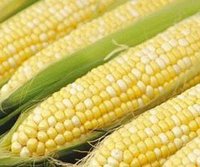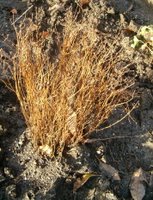



Snows melting, Winds blowing, Trees falling
The snows have melted and the rainstorms have arrived. Then on the heels of the rainstorms came the high winds. Overnight, we had gale force winds up to 120km per hour raging through Vancouver Island and the Gulf Islands.
Major bridges are closed and power has been cut to thousands of homes. Sara said to me this morning that she counts us lucky that we are still able to make our morning coffee and have electricity to heat our home.
A neighbor of ours lost his pickup truck when a large tree fell on it. We have a tree teetering on our property, and it is going to have to come down. Luckily, it is leaning away from the house.
Escaping the stormy ambience and forgetting about trying to figure out our budget given the kids’ Christmas gifts list, I zone out on my e-mail and some jokes that a friend sent me. It is amazing how humor can improve our outlook on life, sometimes instantaneously.
Eloise and John are very enthusiastic about the Advanced Nutrients Nutrient Calculator. This is a device on their website that allows you to punch in your particulars in terms of the kinds of nutrients you use and the additives suggested by this very knowledgeable company, then get very specific mixing instructions with regard to the amounts to use in your watering regimen.
Our New Zealand friends have decided to feed their vegetables, including their sweet corn, with 100% organic nutrients. So on the top line of the Nutrient Calculator they had to select “100% Organic” under Nutrient Base.
Since all of their vegetables are still in the vegetative cycle, under Formula they chose “100% Organic – Vegetative Growth.” Then under Reservoir Size they wrote in 50 Litres, which is how much liquid their watering tank holds.
Under Output Units they left the selection at “Metric,” since they are comfortable using this international standard. For those who prefer the US and British measurements (i.e. fluid ounces) the other choice is ‘US” in this category, which when selected will instantaneously switch all the measurements to those units.
The solid bars underneath the top line show how many parts per million (PPM) of suspended particles are contained in their nutrient solution, provided they follow the suggested ingredients below.
The PPM for John and Eloise progresses from 498 for week 1 all the way to 745 for week 8. It actually goes up by increments to 745 in week 5 and stays at that level for the rest of the vegetative growth.
The other number is EC, which stands for electrical conductivity. This goes from 0.71 during week 1 to 1.06 during week 5 and stays at that level for weeks 6, 7, and 8. You can buy an instrument that measures the EC of your nutrient solution and it is very meaningful to horticulturalists.
(I’ve never been able to figure out its significance, and neither has Eloise or John.)
The most important part of your nutrient calculations should be the exact amounts of each ingredient that you need to blend into your nutrient mix, week by week.
Their base nutrient at this point is Iguana Juice Grow (which 100% organic fertilizer has given Sara and I incredible results with our flowers and vegetables). They have to pour in 52.5 mL in week 1, progressing by increments to 77.63 mL in week 5. Weeks 6, 7, and 8 stay at that level.
Grandma Enggy’s Humic and Fulvic Acid are virtual staples of organic gardening. Both of these miraculous products are derived from a rich, humus laden deposit called “leonardite,” that has to be mined from deep within the earth.
Both of these additives are mixed in at the rate of 37.5 mL in week 1, up to 56 mL in week 5 and each week thereafter.
Carbo Load (powder) is to be mixed thoroughly. 4.5 grams during weeks 1 and 2, 5.5 grams weeks 3 and 4, and 6.5 grams during weeks 5 to 8.
SensiZym, used to cleanse the root structure from debris and enable it to absorb nutrients more readily, needs to be added 123.5 mL during week 1 up to 185 mL during weeks 5, 6, 7, and 8.
The root colonizers, Piranha, Tarantula, and Voodoo Juice have only to be added during weeks 1 and 2 and weeks 6 and 7, and not in between. This is because they grow on their own as soon as they are applied, spreading their beneficial fungi, bacteria, and microbes throughout the root systems.
The rate for Piranha and Tarantula is 4.5 g each time they’re added, while Voodoo Juice, which is a liquid, stays at 67.5 for each application.
Grandma Enggy’s Seaweed Extract, whose praise I sang in last week’s posting, should be mixed in 67.5 mL during weeks 1 and 2, 103.5 mL during weeks 3 and 4, and 123.5 during weeks 5, 6, 7, and 8.
Finally, Organic B, which I also mentioned with high praise last week, needs to be applied at the rate of 82.5 mL in week 1 to 123.5 mL in weeks 5, 6, 7, and 8, at essentially the same rate as Seaweed Extract.
I’m still awaiting some more pictures from New Zealand, but I found this great shot of some sweet corn on the Internet, so I decided to borrow it.
Sara took Hedgehog and Jim into Vancouver yesterday for the Aquarium’s annual Christmas party. They braved the winds and had to take the late ferry back home. Now I hear that Stanley Park (home of the Aquarium) is closed to the public because of fallen trees.
We should count ourselves lucky, once again.
posted by Tim at
10:41 AM
![]()

0 Comments:
Post a Comment
<< Home